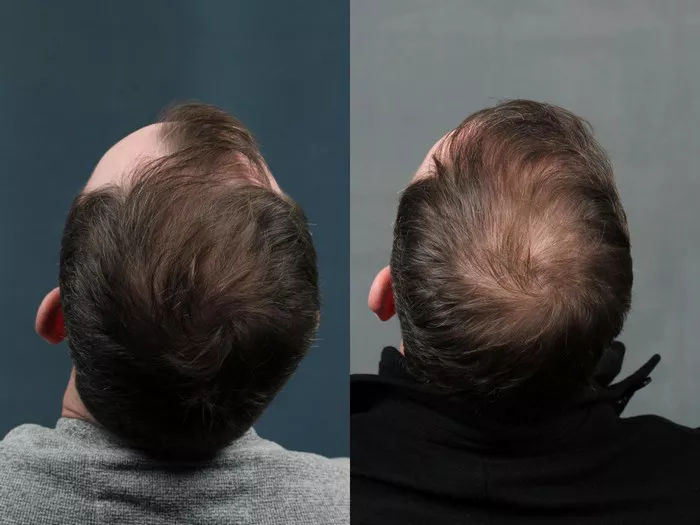When considering a hair transplant, one of the most crucial questions that arise is, “How many grafts will survive?” This is a valid concern, as the success of a hair transplant largely depends on graft survival. In this comprehensive guide, we will delve into the intricate details of hair transplant survival rates, factors affecting graft survival, and essential considerations for individuals looking to regain a fuller head of hair.
The Basics of Hair Transplant
Hair transplantation is a surgical procedure to treat hair loss. It involves taking hair follicles from a donor area (typically the back or sides of the head, where hair is resistant to balding) and implanting them into the balding or thinning areas. The two primary techniques are Follicular Unit Transplantation (FUT), which involves removing a strip of scalp and dissecting it into individual follicles, and Follicular Unit Extraction (FUE), where follicles are individually extracted. FUE is less invasive and leaves minimal scarring. Successful hair transplants result in natural-looking, permanent hair regrowth, but the procedure’s outcome depends on factors like donor hair quality and surgeon skill.
Factors Affecting Graft Survival
The following are factors that affect graft survival:
1. Skill of the Surgeon:
The experience and skill of the surgeon play a pivotal role in graft survival. Surgeons with extensive experience in hair transplantation are more likely to achieve higher survival rates.
2. Graft Handling:
Proper handling of grafts during extraction and implantation is critical. Grafts should be handled delicately to minimize damage and improve their chances of survival.
3. Donor Site Quality:
The quality of hair follicles at the donor site (typically the back and sides of the head) affects graft survival. Healthy, robust donor follicles are more likely to survive and thrive.
4. Recipient Site Preparation:
The recipient site (bald or thinning area) should be prepared meticulously to receive the grafts. Creating tiny incisions that match the angle and direction of natural hair growth is essential.
Graft Survival Rates: What to Expect?
The following are expected results for graft survival:
1. The First Few Weeks:
After a hair transplant, it’s common for some transplanted hair to shed within the first few weeks. This is a natural part of the process, and it doesn’t mean the grafts have failed.
2. Early Growth:
New hair growth from the transplanted grafts usually starts to appear within 3-4 months post-surgery. This initial growth may appear thin, but it gradually thickens over time.
3. Final Results:
The final results of a hair transplant can be assessed around 12-18 months after the procedure. By this time, the majority of the transplanted hair should have grown in, providing a fuller and natural-looking head of hair.
Enhancing Graft Survival: What You Can Do?
Here are ways to improve graft survival:
1. Follow Post-Op Instructions:
It’s crucial to adhere to your surgeon’s post-operative instructions. This includes avoiding strenuous activities, protecting your scalp from direct sunlight, and taking prescribed medications.
2. Maintain Scalp Health:
A healthy scalp is essential for graft survival. Use mild shampoos, avoid excessive scratching or rubbing, and maintain proper hygiene to prevent infections.
3. Balanced Diet and Hydration:
A well-balanced diet rich in nutrients and proper hydration can support the healing process and the growth of transplanted hair.
4. Stress Management:
High stress levels can negatively impact graft survival. Implement stress-reduction techniques such as meditation or yoga to promote a healthy recovery.
When to Seek Professional Advice?
Here are times when you need to seek professional advice:
1. Slow Growth or Poor Density:
If you notice that the transplanted hair is growing very slowly or if there are significant gaps in the density, consult your surgeon. Additional treatments or adjustments may be necessary.
2. Infection or Complications:
Any signs of infection or complications at the transplant site, such as excessive redness, swelling, or pain, should be reported to your surgeon immediately.
3. Unusual Hair Loss:
If you experience unusual hair loss or a sudden decrease in graft density after the initial recovery period, seek professional advice promptly.
See Also: Reducing Swell After Hair Transplant: A Step-By-Step Guide
Conclusion: Maximizing Graft Survival in Your Hair Transplant Journey
In the world of hair transplantation, understanding graft survival rates is crucial for achieving the desired results. While various factors influence graft survival, choosing an experienced surgeon and following post-operative instructions diligently can significantly enhance your chances of success. Remember that patience is key, as it takes time for the transplanted hair to fully grow in. By taking the right steps and seeking professional guidance when needed, you can embark on your journey to a fuller head of hair with confidence.
In summary, the number of grafts that survive after a hair transplant can vary, but with the right care and considerations, you can maximize the success of your procedure and enjoy a natural-looking head of hair.


